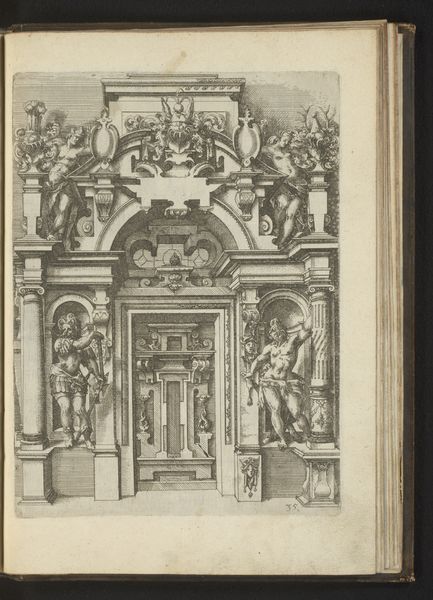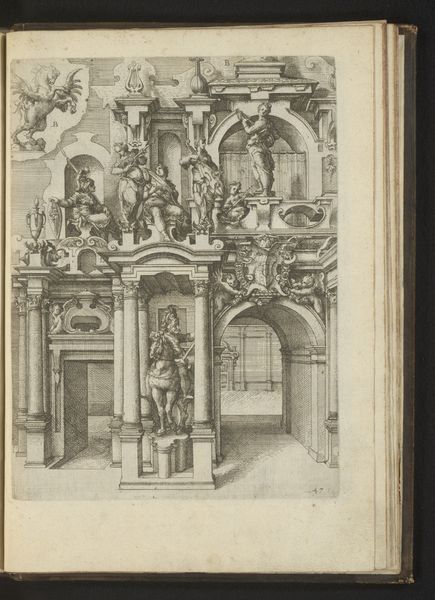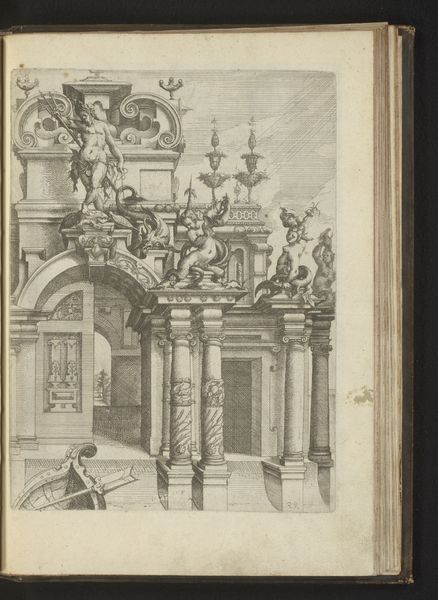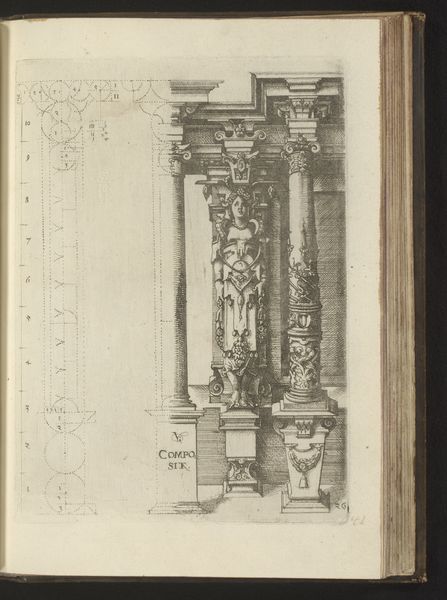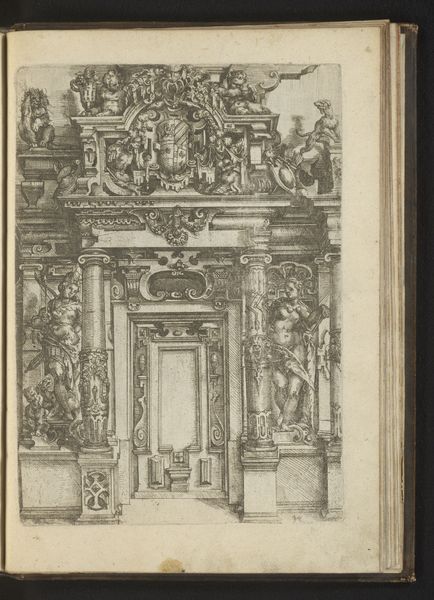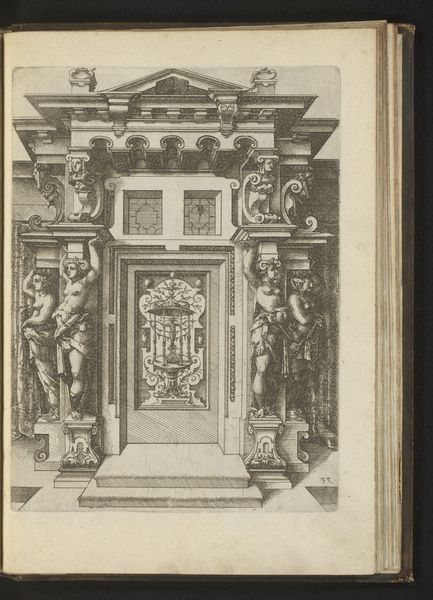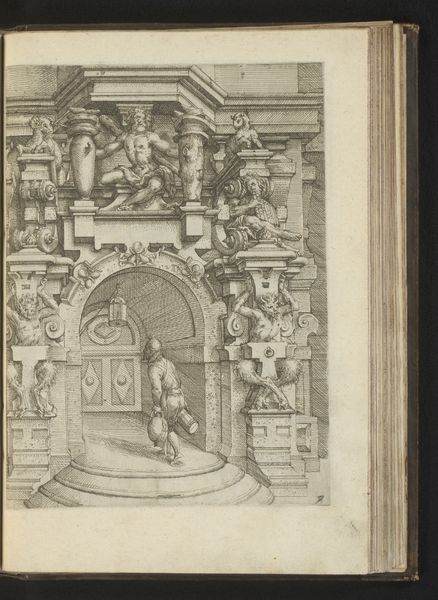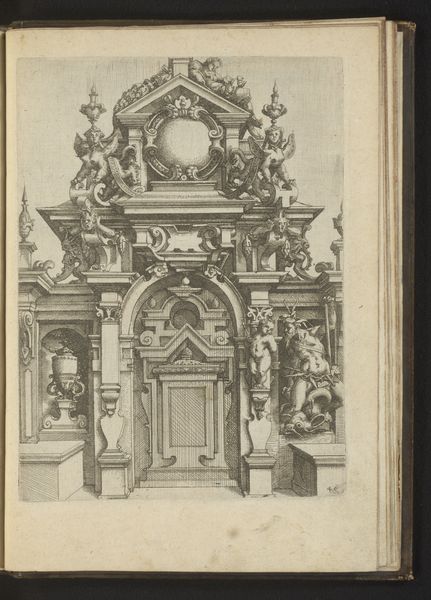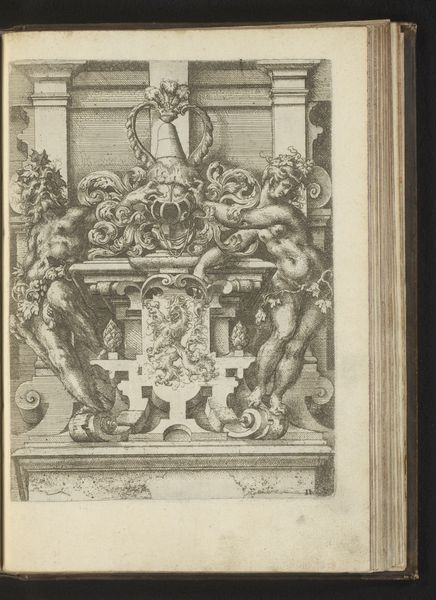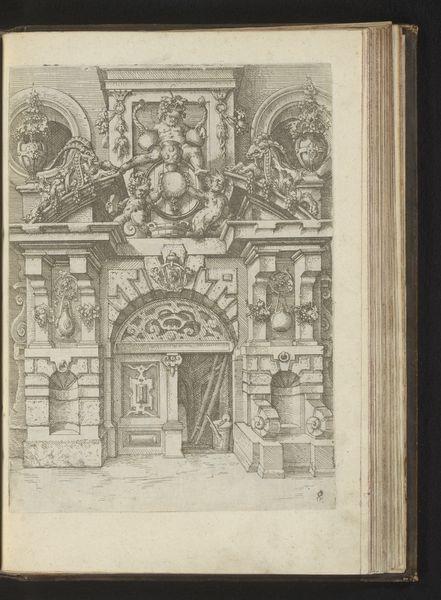
Portaal met tapijt voor de doorgang en bovenaan Zeus op een adelaar geflankeerd door vrouwen op leeuwen 1593 - 1595
0:00
0:00
drawing, engraving, architecture
#
drawing
#
aged paper
#
allegory
#
mechanical pen drawing
#
pen sketch
#
sketch book
#
mannerism
#
figuration
#
11_renaissance
#
personal sketchbook
#
geometric
#
pen-ink sketch
#
pen and pencil
#
pen work
#
sketchbook drawing
#
history-painting
#
sketchbook art
#
engraving
#
architecture
Dimensions: height 248 mm, width 186 mm
Copyright: Rijks Museum: Open Domain
Editor: This is Wendel Dietterlin's "Portaal met tapijt voor de doorgang en bovenaan Zeus op een adelaar geflankeerd door vrouwen op leeuwen," made between 1593 and 1595. It's an engraving, full of incredibly intricate detail, that looks like a fantastical doorway. What strikes me is the sheer amount of work that went into this—all those tiny lines! What stands out to you? Curator: What grabs me is precisely the process by which this image became accessible. It's not just the labor Dietterlin invested, but how that labor was then transferred through the repeatable process of engraving, allowing for widespread consumption. This transcends the preciousness of a unique artwork; it becomes about dissemination. Look at the aged paper—consider the role of the printer, the bookbinder, the market that sustained this production. Editor: So, you're less interested in the allegorical scene itself and more in its existence as a multiple? Does the Mannerist style factor into this understanding? Curator: Precisely! The Mannerist style, with its exaggerated forms and dense compositions, further emphasizes the artifice. This wasn't meant to imitate reality, but to display artistic ingenuity—and, critically, the skilled labor needed to reproduce that ingenuity for a wider audience. It highlights the very constructed nature of the image and its dependence on both artistic and mechanical processes. Think about the socio-economic conditions that enabled this level of craftsmanship and consumption. Editor: That's fascinating! I was so focused on the mythological imagery that I hadn't considered the broader implications of its material existence. It makes me think about who had access to these images and how that shaped their understanding of art and culture. Curator: Exactly! Considering art as a product of labor and a commodity shifts our perspective. It connects the drawing to broader economic and social forces shaping the Renaissance world. It encourages us to consider who profited, who consumed, and what that reveals about the value placed on artistry and information. Editor: I hadn't thought about the distribution of artistic skill, the business model and social consumption this represented. I see a new perspective to examine in future works.
Comments
No comments
Be the first to comment and join the conversation on the ultimate creative platform.
